Safety focus required for drivers and vehicles
By John Gilbert
Driving in the rain, and the snow, and in other dangerous conditions, are topics worth frequent discussion, and so is the ability to focus on driving, even when conditions are perfect. Safety technology in modern vehicles is truly remarkable, and the technical capabilities built into new vehicles can be a tremendous ally to any driver. But those features cannot insulate us from the potential of tragedies that always lurk out there.
During our last visit, we discussed the numerous vehicles available for the Midwest Auto Media Association (MAMA) members to drive at the annual Fall Rally at Autobahn Country Club in Joliet, Ill., and the ensuing voting procedures for Family Car of the Year. Two things led me to follow up this week. One was the explanation I noted about driving home from Chicago to Duluth, in extraordinary circumstances. The other was a personal family tragedy we were stricken with on a Minnesota highway.
Driving home from Chicago, we had the opportunity to drive a new 2020 Hyundai Palisade, that South Korean company’s first venture in building a large, roomy, 3-row SUV, and Hyundai’s partner, Kia, offers a sister ship with the Kia Telluride. Hyundai has been making a series of fantastic vehicles accompanying a decade of remarkable technical breakthroughs, since about 2010, shortly after taking over the struggling Kia brand. Kia was able to adapt to Hyundai’s technical mastery and the two now operate separate but equal vehicles at all levels, leaving the styling to differentiate your choice.
When it comes to the new Palisade — and Telluride — I must say it is challenging, if not impossible, to pick one over the other.
I had driven the Palisade at its introduction, in Coeur d’Alene, Idaho and the surrounding mountains, and on a very interesting journey across the state of Washington, after that introduction. I also recently had a week to live with a Telluride, home on Lake Superior’s North Shore, just outside Duluth, Minnesota. So this would be my chance to drive the Palisade home for a week’s use, and potential comparison. Getting there was more than half the fun, and education, of the Palisade’s assets.
The Telluride had all of those same assets — a fantastic new platform, longer than the outgoing Sante Fe, with Hyundai’s engine magic applied to its 3.8-liter V6, with direct injection, an 8-speed house-built automatic transmission that is up there with the top transmissions in the industry, a secure safety structure making generous use of high-grade steel from Hyundai’s own steel manufacturing plant, and a firm but supple suspension system to accommodate the active, on-demand all-wheel-drive system.
Coupled with all the highest of high-tech stability features such as blind-spot detection, parking assist, forward collision-avoidance assist, etc., the Palisade adds a thoughtful item that alerts and won’t allow rear occupants to open the door when parked if another vehicle is approaching from behind. All of this in a structure that is much more spacious on the inside than its modest and well-shaped exterior might indicate, with a sliding second row of captain’s chairs making the livable third-row seats accessible. You could load up seven occupants in Palisade-style luxury and safety.
The hidden asset in the entire Hyundai/Kia scheme is something not promoted enough, in my opinion. Its highway driving assist has lane-departure warning, and you can adjust that with a switch. Believe it or not, some consumers have convinced themselves they don’t want to be notified if they are wandering out of their lanes! Enhancing it means you can move up to lane-keeping assist, to gently push you back into your lane, or go all out and have lane-centering assist, which keeps you in the center of your lane, where we should all want to be. It is gentle and unobtrusive while keeping you centered, and I’ve been thoroughly impressed with it in the Santa Fe, Tucson and even the compact Kona, which we’ve named New Car Pick of the Year for 2019.
It is also amazing in the larger Palisade — or Telluride — which are designed to compete with large 3-row competitors such as the Ford Explorer and actually might compare in room and comfort to still-larger vehicles such as the Tahoe. I didn’t know how good it was until that drive from Chicago to Duluth, after considering all aspects of every car we test-drove at Autobahn Speedway, for handling, room, comfort, performance and safety, to denote our votes for Family Car of the Year there. Maybe I put an inordinate emphasis on safety, but if so, I make no apologies.
Driving home, after dark, on a Wisconsin stretch of Interstate 94 and 90 north of Madison, cones and markings had narrowed the two lanes, using the shoulder for part of the driving lanes occasionally, and that scene was altered as night brought us darkness, and we ran into a monsoon-like downpour that was strong enough that I considered taking the next exit and waiting out the rain squall. Which might have lasted for days. We were accompanied on that stretch by a virtual caravan of semi trailer trucks that outnumbered the cars. I was attempting to ease past two nose-to-tail semis in the right lane, when we came up on a third semi, prompting the first semi to pull into my left lane for a pass.
No problem, except heightened adrenaline, as I was safely behind that semi and we were nearly past the two slower semis in the right lane. Remember, though, it was raining hard enough to tax the wipers on full, it was dark, and we were on incredibly narrow lanes. About halfway past the two semis on our right, a fourth semi approached from behind, going faster than all of us as he pulled up on my tail. Our cluster, at 70 miles per hour , included us in the left lane, behind one semi, just ahead of another, and beside two more, which had sealed us in the left lane as they cruised along nose-to-tail.
It was harrowing, and I remained calm with my heart-rate on red-alert high, as my older son, Jack, stept peacefully in the front passenger seat. Our lane curved even closer to the left edge on the shoulder following the temporary lane markings, and I suddenly realized my Palisade was handling perfectly, truly “driving smaller” than its size, but also that the lane-centering device was working calmly to keep us squarely in the center of our fluctuating, narrow lane.
That realization gave me a fantastic boost of confidence from the assurance that I was in complete control, and no doubt my Palisade was helping. I have driven lane-keeping devices from virtually every manufacturer, and I have never driven one more impressive than the Hyundai — and Kia — system.
We turned off the interstate at Eau Claire to head north on Wisconsin Hwy. 53 to Duluth, but after refilling with fuel, we averaged 30.1 miles per gallon, quite amazing, off an EPA estimate of 24 for the powerful V6. It was closer to 25 the rest of the week, in town, if we kept our foot off the responsive gas pedal.
Perhaps an even bigger surprise was to find the sticker price on the test vehicle was $48,000 for one notch below the top-of-the-line and pricier Palisade Ultimate.
You can choose which of two fantastic interiors in the Palisade (and Kia Telluride), and maybe you’ll prefer the look of the grille or rear end, or dashboard of one over the other. But they both register high on my new-SUV outlook, and even higher when you consider the performance, with power, balanced and adjustable handling, and the structural safety, topped by the extreme safety asset of the lane-centering system.
SAD GOODBYE, JUDIE
When it comes to safety and security while driving, there are other factors involved, and luck and timing are among them. My wife, Joan, is the youngest of three children in her family, who spent part of their growing up years in Duluth. Her brother, Jerry, played football at Duluth Cathedral and Duluth Teacher’s College, way back when, and he died a few years ago after several debilitating ailments, following a career as head of sociology at Miami Date Community College.
I always thought of Joan’s older sister, Judie, as something of a fragile creature, sometimes timid, but always pleasant to me. She attended Stanbrook Hall, in Duluth, and after the family moved to the Twin Cities, she married Jim Wilhelmy. Judie became the rudder that steered her husband and their three kids, Joe, Lynne and Tommy, through a wandering course of life that included homes in North St. Paul, Cloquet, Tower, Elk River, and finally in a nice home in Fergus Falls. Northland folks in Cloquet will probably best remember the kids, who were active in youth sports there.
Jim had some issues with chemical dependency, and ironically became a couinselor to help others fight it. He insists that Judie helped turn his life around, where his only remaining vice seems to be fishing — whenever possible. He went off to meet his brother, Gus, in Tofte in mid-October for some late-season fishing in the Boundary Waters.
Their son, Joe, thought it would be a perfect time to give his mom a treat after some recent medical issues so he wanted to drive her from Fergus Falls to Duluth to visit Joan and me. We were to meet them for dinner at a restaurant of my choosing, on that Tuesday at 5 p.m., and have them to our house for dinner Wednesday night, even though Joan was working full time, and Tuesday is the day I have three columns due for the Duluth Reader. I was writing to finish one or more of my obligations before meeting them. They never made it.
At about 3 p.m., I got a call from Joan. She had just received a call at work informing her that there had been an accident on Hwy. 210, where it intersects with Hwy. 71. Joe stopped, waiting as a north-bound semi went by, partially obscured by a bridge. When he started up, Joe’s Toyota Scion and an Audi A6 collided. Judie was killed instantly. Joe was airlifted to a hospital in St. Cloud where he has undergone several surgeries for multiple broken bones, and he faces months of rehabilitation. Fortunately, the woman and child in the Audi were not seriously injured.
Judie’s entire immediate family is devastated, and so are weth, of course. My sons, Jack and Jeff, joined Joan and me to drive to Fergus Falls for the funeral service. Judie’s grand-daughter, Trina, told us that of all the things Judie did, she always told her that the thing she most looked forward to was whenever she could see Joan. They were the last remaining members of their immediate Sicard family.
On the most recent visit, Joan had taken Judie for a walk along the beautiful wooded trails adjacent to Lester River, and Joan snapped a photo that we both think is the best photo we’ve seen of her in recent years. The hollow feeling is particularly haunting for us, because they were coming to see us when the tragedy occurred.
The shock hasn’t worn off yet, and it will take awhile. In my business of evaluating cars, it’s evident that the newest cars are loaded with safety elements, from stronger build-quality to high-tech electronics. But you still have to be constantly aware and focused on everybody around you when you’re on the road. And even if you are, you need the good luck to not be in the wrong place at the wrong moment.
Rest in peace, Judie. We’ll never forget you.


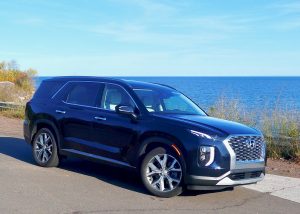
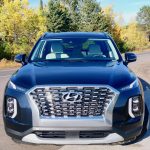
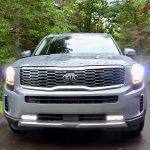
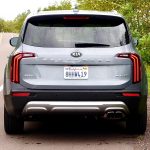
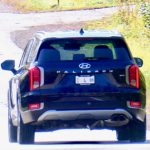
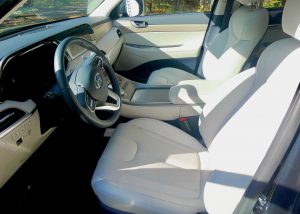
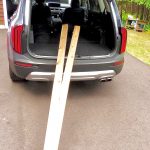
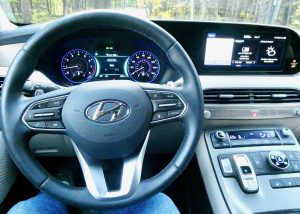
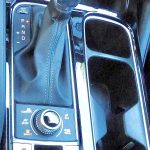
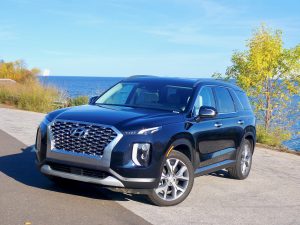
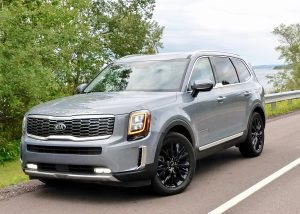
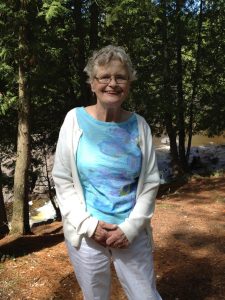
 John Gilbert is a lifetime Minnesotan and career journalist, specializing in cars and sports during and since spending 30 years at the Minneapolis Tribune, now the Star Tribune. More recently, he has continued translating the high-tech world of autos and sharing his passionate insights as a freelance writer/photographer/broadcaster. A member of the prestigious North American Car and Truck of the Year jury since 1993. John can be heard Monday-Friday from 9-11am on 610 KDAL(www.kdal610.com) on the "John Gilbert Show," and writes a column in the Duluth Reader.
John Gilbert is a lifetime Minnesotan and career journalist, specializing in cars and sports during and since spending 30 years at the Minneapolis Tribune, now the Star Tribune. More recently, he has continued translating the high-tech world of autos and sharing his passionate insights as a freelance writer/photographer/broadcaster. A member of the prestigious North American Car and Truck of the Year jury since 1993. John can be heard Monday-Friday from 9-11am on 610 KDAL(www.kdal610.com) on the "John Gilbert Show," and writes a column in the Duluth Reader.